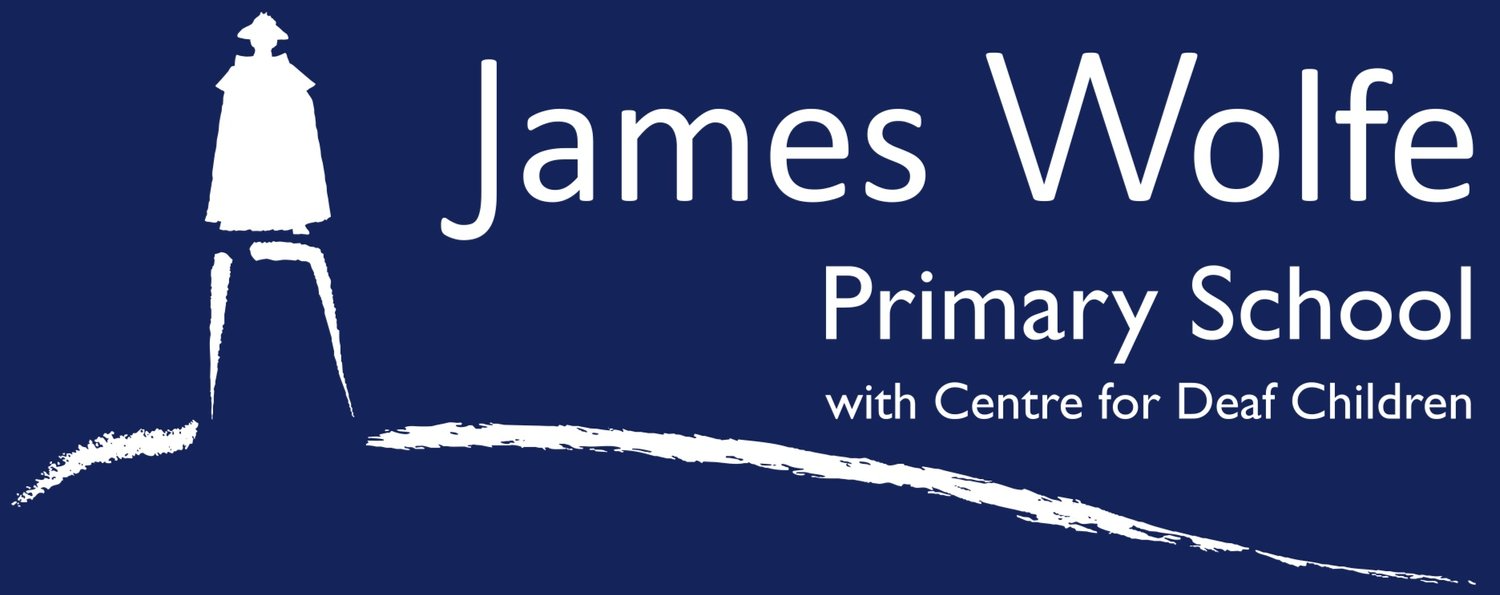Curriculum
The National Curriculum gives schools the flexibility to deliver the content creatively and to suit the needs of their school and community. We are really PROUD of the curriculum offer at James Wolfe Primary School which is underpinned by our school PROUD values.
Each half term, the children have a different theme. Take a look at our themes for 2023-24.
Our whole school has a strong commitment to the use of sign language and all children at James Wolfe learn British Sign Language. Please take a look here for more information about how we teach BSL.
Curriculum report
Programmes of Study
Below are links to the National Curriculum Programmes of Study, published by the Department for Education.
Please contact us to find out more about the curriculum at James Wolfe Primary School.
Phonics
At James Wolfe Primary School fluency, comprehension and pleasure are the core values in our approach to developing successful readers.
We know that reading underpins success in all areas of the curriculum and greatly improves children’s life chances as they move into secondary school and beyond. As a result, at our school, we do not just teach children to read confidently, we also ensure that our children become life-long learners.
In order to give children the very best literacy skills, we have a clear focus on rich oracy opportunities embedded within our curriculum. In English specifically, we encourage book talk within our classrooms to develop a true love for reading and literature. Alongside the basic skills of decoding, we teach comprehension and prosody to enable children’s language acquisition to effectively develop alongside their reading attainment. Through accessing carefully selected, rich texts that can either be read or read aloud, our children have multiple exposures to help them develop their vocabulary.
How we teach phonics
In Nursery, we teach using the Little Wandle Foundations for Phonics. This learning is focused around environmental sound discrimination, rhyme and alliteration which then progresses to oral blending and segmenting. The focus is on daily oral blending and language development through high quality stories and rhymes.
In Reception and Y1, children progress through the Little Wandle Letters and Sounds Revised programme. Phonics is taught for 25 minutes every day. In Reception, reading sessions start in week two. For children who are not decoding, blending remains a focus.
By the end of Reception, children will have been taught up to the end of Phase 3. If they are ready, children may start Phase 4.
By the end of Y1, children will have been taught up to the end of Phase 5.
In Y2-Y3, phonic lessons are taught daily to children where appropriate – following the model of Little Wandle but plugging specific gaps identified through assessment.
In Y2-Y6 there are planned catch-up sessions following a set model to address specific gaps. These are taking place at least three times a week, and are often used to target new arrivals or children whose first language is not English.
All staff including support staff have regular CPD and are confident to deliver a quality first phonics sessions.
How we teach reading
Reading is taught in tandem with phonics and follows the model set out in Little Wandle Letters and Sounds Revised. After a whole class phonics input, children across Reception, Y1 & Y2 apply their phonics knowledge by using a fully matched decodable book. These daily sessions are 25 minutes long. There are approximately 6 children in a reading group and the teacher reads with one group daily whilst the other 5 groups read with a teaching assistant. The focus is on ‘keep up not catch up’ during these sessions.
In Reception & KS1 we focus on the reading strategies of fluency, decoding and blending. Books selected by the teacher show cumulative progress according to the sounds the child has been taught that half term. The books within our school show fidelity to the Big Cat Phonics scheme to ensure consistency.
Children take home books matched to their ability from the same reading scheme used in class and should be able to read that book with 95% accuracy. Children are able to self-select books to read for pleasure and this is encouraged across our school.
How we assess phonic knowledge.
In Reception and Y1, at the end of each week, there is a review session which recaps the learning. There are also whole review weeks (pre-planned and bespoke review weeks to address gaps identified by the class teacher’s ongoing formative assessment).
Children identified in Reception and Y1 as in danger of falling behind are immediately identified and daily ‘keep up’ sessions are put in place – sessions follow the Little Wandle Letters and Sounds Revised programme.
·In Reception and Y1, the children are assessed at the end of every half term using the assessment tracker.
Children from Reception to Y2 are monitored by the levelled books they are accessing and their 95% fluency when reading that book independently. This is especially helpful for transition to the next class, so rapid progress can continue.
The children in Y1 sit the Phonics Screening Check in the summer term.
Children who do not pass the Phonics Screening Check in Y1, will re-sit this in Y2.
Children who are currently in KS2 who didn’t leave KS1 at the expected level are monitored termly against their phonics knowledge and reading progress.
Children who are in Y2-Y6 and need ‘catch up’ sessions are assessed through teacher’s ongoing formative assessment as well as half termly summative assessments related to the relevant intervention







